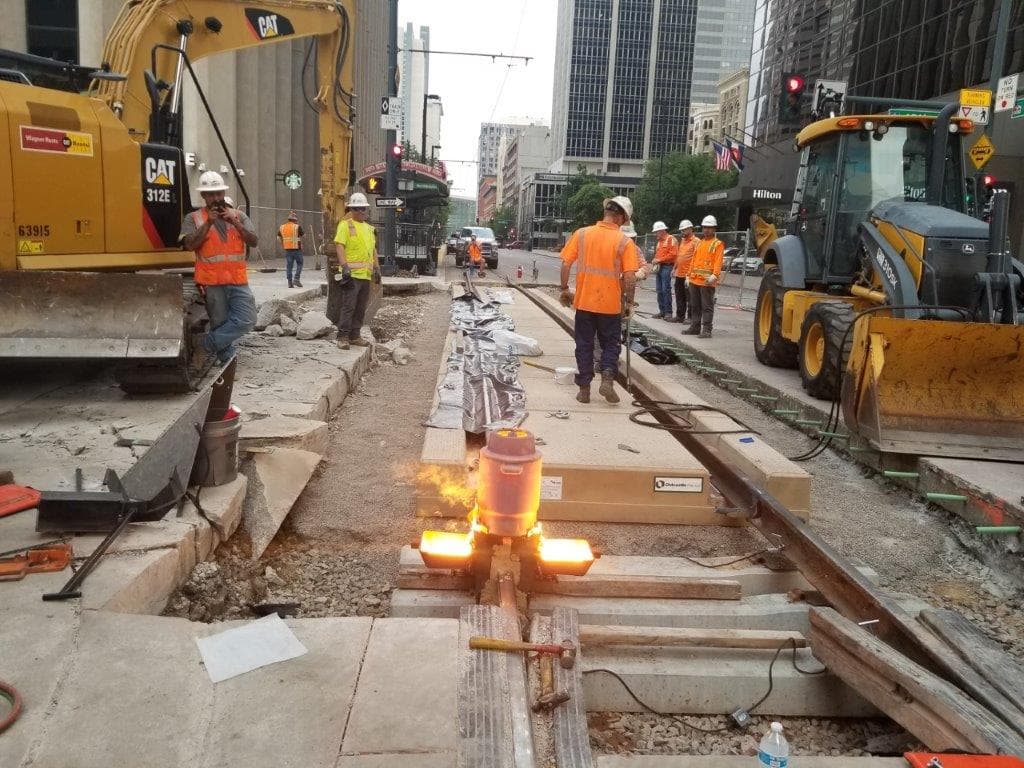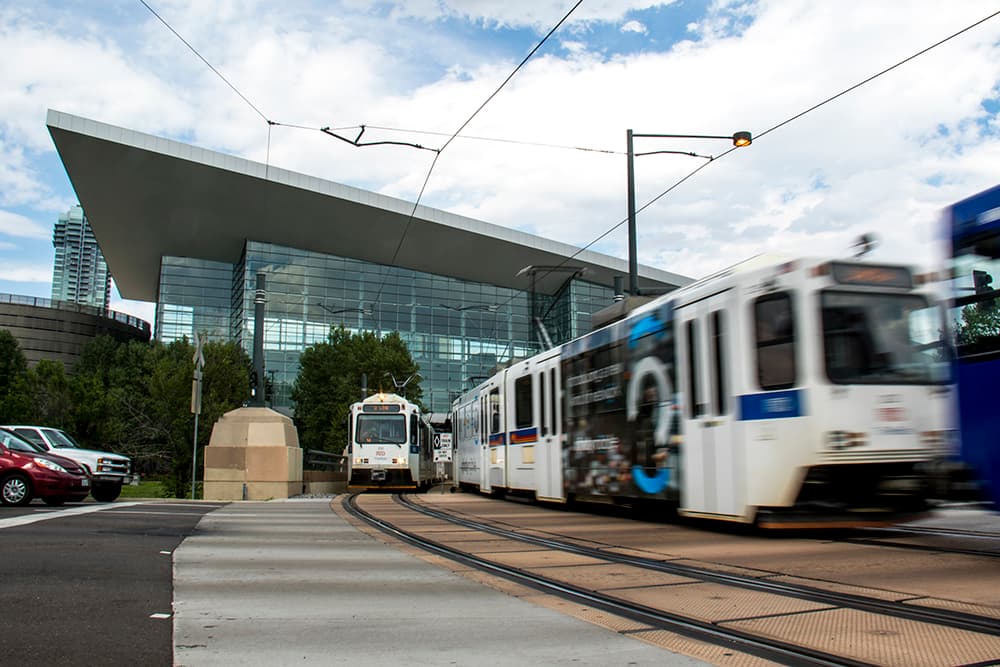The ring of light rail tracks in downtown Denver, starting at 14th and Stout and ending on 19th and California, are in desperate need of repair.
The federal government knows it: On July 1, the U.S. House approved a massive infrastructure bill that includes 8 million just for the project. According to officials, the repairs are "urgently needed to ensure the safety and reliability of the city's light rail system" -- but funding still needs to pass the Senate.
We spoke with the Regional Transportation District to figure out why these repairs are needed, and what they will look like.
One of the most damaging factors to the rails in this area is the magnesium chloride salt used to combat ice in winter. First introduced to Colorado's roadways in 1996, magnesium chloride works effectively but can damage vehicles that come in contact with it.
The conditions on the light rail downtown are especially treacherous because the roads and tracks overlap, and so does the salt.
"The salt tends to eat away at things, just like in a marine environment," Ashland Vaughn, the senior manager of engineering construction for RTD, said. "Also, we are an electrified light rail system. So once you mix magnesium chloride and moisture from the snow, and then some of the electricity -- you have kind of an electrolysis going on."
"It helps speed the degradation of other materials, especially metals, but even concrete as well," Vaughn explained.
Rails are built a little like a sandwich, with a gravel base called a "ballast" underneath, perpendicular concrete "ties" above that, and then the rails attached on top.
Tracks mingling with traffic causes other problems as well, because the rails need another layer of concrete flatwork to enable vehicles to cross. And in order to replace this infrastructure, construction crews have to pull up everything, from the flatwork to the ballast.
New installation can't begin until there's nothing left but soil.

The image above shows construction crews pulling up rail on the intersection of 18th and California streets in 2018. The gravel ballast layer is exposed, and the forklift is holding one of the concrete ties.
Although railroad-building hasn't changed much in the last century, there are a few new innovations.

In the image above, construction crews are installing the new light rail lines in the same intersection. While the ballast/tie/rail structure works most of the time, intersections need to be flat for other vehicles. In these cases, the railroad ties and concrete flatwork have been swapped for beige "panels," which serve the same purpose.
Another difference can be found in the crucible on the rail, the one that's glowing with molten metal. This is called a "field weld" and is another innovation that connects the rails to each other more smoothly. And if you look closely, the small green rods coming out of concrete pavement are meant to help bridge the gaps between different materials like the concrete slabs and the beige panels. This should add stability over the years.
And will these new rails last longer than the ones before them?
"It's kind of hard to have that crystal ball," Vaughn said. "We do believe, because of the different construction, that these will have a longer lifespan... we certainly designed it with that in mind."
RTD has plans underway to fix at least another four or five of intersections in downtown, but without federal funding the projects are triaged, with only the worst undergoing repairs.













